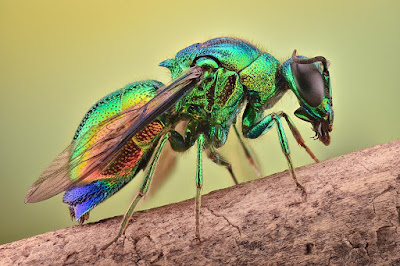The neatness of this creature is kaleidoscopic: It seemingly goes on forever and if you look and think about it too much you'll get sick and confused. This neat creature is a sex-changing parasitic tongue-eating louse of the crustacean phylum (shrimp, lobster, crab). An infant C. exigua lands in a fish's gills, infiltrates it and begins to develop into a male. Then when a second one appears in the gills it stimulates the first one to go all "lady boy" and turn from male into female (scientific term for Protandrous hermaphrodites I am pretty sure) and crawl up from the gills, through the throat and anchors herself to the tongue with her 7 pairs of legs.
Then the 2nd creature is the male that impregnates the newly turned Betty. The neatness continues and the C. exigua that attached onto the tongue will not only suck blood and devour the tongue until it's a muscular stub, atrophies and falls off AND with the rose snapper fish it will replace the tongue with its body and provide the fish with a newly functional tongue. This is the only known instance in the animal kingdom of a parasite functionally replacing an organ of its host. How neat is that!
Then after procreation is complete and it has released its freaky offspring and drained all the blood supply from the tongue, it is believed that the C. exigua does like Elsa and "let it go" from the stub that was once a tongue and gets swallowed by the fish. Then the fish, with no tongue, eventually dies too.
So let's sum up: a 14-legged hermaphroditic parasite get's all vampire-like and sucks the blood out the tongue of a fish, uses it for a bang pad, get's knocked up, kicks the kids out of the basement and forces them to find their own bang pad, then this things goes all Moby Dick gets swallowed when the well dries up. NEAT!



